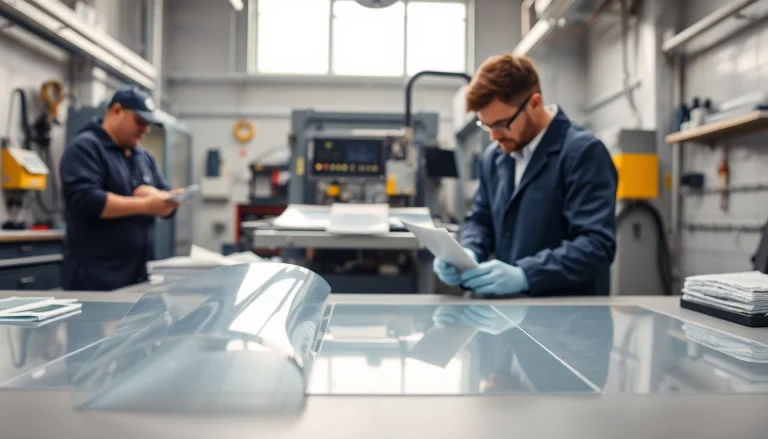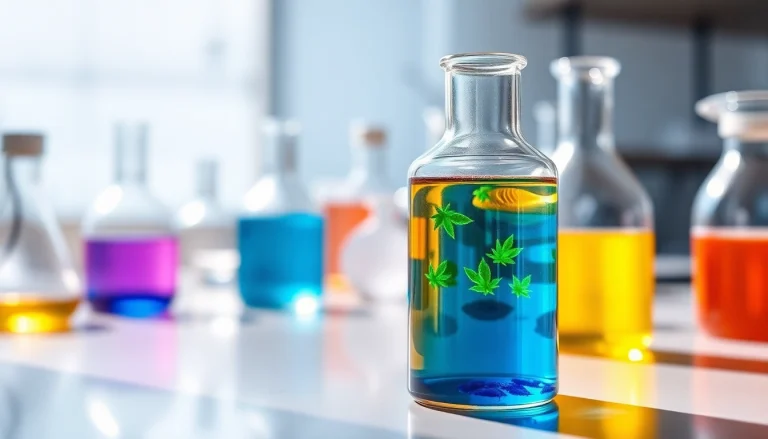
Understanding Infusion Resins
What are Infusion Resins?
Infusion resins are specialized synthetic resins designed for composite manufacturing through infusion methods, primarily using a vacuum pressure mechanism. These resins are low-viscosity and engineered to flow easily into pre-formed fiber stacks, creating strong, lightweight structures that are essential in many industries, including aerospace, automotive, and marine applications. Their composition enables them to provide excellent mechanical properties while ensuring high clarity and reduced porosity in the final product. By utilizing infusion resins, manufacturers can produce components with enhanced stability and durability, making them a game-changer in advanced composite fabrication.
Benefits of Using Infusion Resins
The advantages of using infusion resins in manufacturing processes are numerous:
- Improved Mechanical Properties: Infusion resins exhibit superior strength and stiffness characteristics, essential for demanding applications where structural integrity is critical.
- Reduced Voids and Porosity: The infusion process minimizes air entrapment, resulting in parts with fewer defects and enhanced performance.
- Cost Efficiency: Their ability to fill molds efficiently reduces waste and lowers material costs.
- Customizable Formulations: Infusion resins can be tailored to meet specific performance criteria, such as cure time, viscosity, and thermal resistance.
- Environmental Benefits: Some infusion resins are designed with sustainability in mind, utilizing eco-friendly raw materials.
Infusion Resin Applications in Industry
Infusion resins are widely used across various industries:
- Aerospace: Infusion resins play a pivotal role in crafting lightweight components for aircraft, enhancing fuel efficiency and overall performance.
- Automotive: These resins are integral in manufacturing lightweight automotive parts that improve vehicle dynamics and energy efficiency.
- Marine: Boats and yachts benefit from infusion resins which provide resilience against harsh marine environments while maintaining lightweight structures.
- Wind Energy: Wind turbine blades manufactured with infusion resins offer exceptional durability and aerodynamic efficiency.
Choosing the Right Infusion Resins
Key Factors for Selection
When selecting infusion resins, several key factors must be considered to ensure optimal performance:
- Viscosity: Low-viscosity resins flow more easily into the fibers, ensuring complete saturation without leaving voids.
- Curing Time: Depending on the production schedule, the pot life and cure time of resins can significantly affect workflow.
- Mechanical Properties: Evaluate the strength, stiffness, and elasticity requirements based on the intended application.
- Compatibility: Ensure the resin is compatible with the reinforcements and other materials used in the composite.
- Temperature Resistance: Consider the maximum operating temperature of the final component to guarantee longevity and performance.
Comparing Different Types of Infusion Resins
Infusion resins can be broadly categorized into various types, each with unique characteristics:
- Epoxy Resins: Known for their superior mechanical properties and chemical resistance, epoxy resins are widely used in critical applications.
- Polyester Resins: More cost-effective and easier to process, polyester resins are prevalent in less demanding applications.
- Vinyl Ester Resins: Offering excellent corrosion resistance and mechanical properties, these resins are ideal for marine environments.
Common Mistakes to Avoid
While using infusion resins, manufacturers often make common mistakes that can compromise quality:
- Inadequate Surface Preparation: Failing to properly clean and prime surfaces can lead to poor adhesion and mechanical failure.
- Improper Mixing: Not following manufacturer guidelines for resin and hardener ratios can result in incomplete curing or reduced performance.
- Ignoring Environmental Conditions: Resin performance can be significantly affected by temperature and humidity; always consider these factors during application.
Infusion Resin Application Techniques
Preparing the Work Surface
Proper surface preparation is vital in ensuring strong adhesion between the resin and the substrate. This includes:
- Cleaning: Remove dust, grease, and contaminants using appropriate cleaning solvents to prepare the surface for infusion.
- Sanding: Abrade the surface to create a mechanical bond, which enhances adhesion.
- Applying a Release Agent: Use a suitable release agent to prevent the resin from bonding to the mold.
Mixing and Managing Viscosity
Mixing the resin and hardener correctly is critical for achieving desired performance. Follow these steps:
- Accurate Measurement: Use precise scales to measure the components, ensuring the correct mixing ratio.
- Mixing Techniques: Combine the components thoroughly, avoiding air entrapment which can lead to defects.
- Viscosity Control: Adjust the viscosity as needed by controlling temperature or using additives if specified by the manufacturer.
Monitoring the Curing Process
The curing process is crucial to achieve the best properties of the final product. Consider the following:
- Cure Time: Track the temperature and humidity during curing to ensure consistency in the properties of the resin.
- Conducting Tests: Perform mechanical property tests to validate curing parameters and ensure the material meets specifications.
- Visual Inspection: Inspect for any visual flaws post-curing, such as cracks or bubbles, indicating issues that need to be addressed.
Best Practices for Using Infusion Resins
Maximizing Material Performance
To maximize the performance of infusion resins, adhere to these best practices:
- Correct Thickness: Maintain optimal laminate thickness, as excess can lead to issues with resin flow and final strength.
- Layering Reinforcements: Use appropriate stacking techniques to ensure even resin distribution.
- Quality Resin Selection: Choose high-quality resins that provide the best balance of performance and cost.
Maintaining Quality Control
Quality control is crucial in composite manufacturing. Implement these measures:
- Regular Inspections: Conduct routine checks throughout the infusion process to catch any deviations early.
- Testing Protocols: Establish robust testing protocols for mechanical properties, thermal resistance, and visual inspection.
- Documentation: Maintain thorough records of processes, materials, and outcomes for future reference and continuous improvement.
Safety Guidelines for Handling Infusion Resins
Ensuring safety while handling infusion resins should be a priority:
- Personal Protective Equipment (PPE): Always wear appropriate PPE, including gloves, goggles, and respiratory protection.
- Ventilation: Ensure proper ventilation when mixing and applying resins to minimize inhalation of fumes.
- Storage: Store resins in a cool, dry place away from direct sunlight to prolong shelf life and maintain performance.
Future Trends in Infusion Resins Technology
Innovations in Resin Formulations
With advancing technology, the formulations of infusion resins are evolving:
- Smart Resins: Development of intelligent resins that can adapt to environmental changes, enhancing their functionality and safety.
- Hybrid Compositions: Integrating traditional materials with bio-based components for sustainability while retaining performance characteristics.
- Enhanced Curing Systems: Innovations in curing agents allowing for faster processing times without compromising mechanical properties.
Sustainability in Infusion Resin Production
The move towards sustainability in the production of infusion resins is gaining momentum:
- Recyclability: Research focused on making resins that can be reused or recycled, reducing waste in composite manufacturing.
- Bio-based Resins: Increased availability of renewable feedstocks for developing less harmful, more sustainable infusion resins.
- Life Cycle Assessments: Conducting thorough assessments to understand the environmental impact of resin production and consumption.
The Role of Automation in Infusion Processes
Automation is revolutionizing infusion processes, leading to several advantages:
- Increased Efficiency: Automated systems streamline repetitive tasks, reducing labor costs and cycle times.
- Precision Control: Automation allows for precise control over resin application, improving consistency and quality.
- Data Integration: Smart technology can collect and analyze data throughout the process, providing real-time feedback and enabling proactive adjustments.






